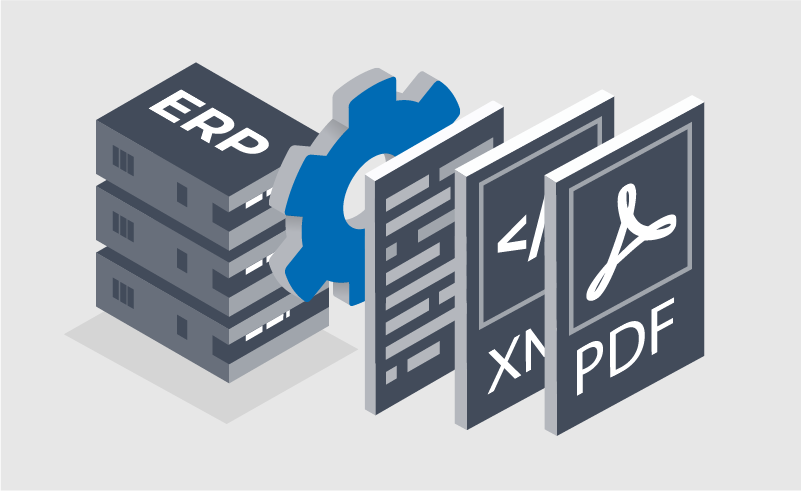The rise and current state of digital transformation
If you look at the evolution of digital transformation, the initial factors that led to a global change still influence us to this day. Since the introduction of the internet, business organizations of all sizes have had to rethink their operations. As a new era of data arrived, demands and expectations surged to never-before-seen heights.
Companies started connecting their operational networks via a digital platform to be able to handle and manage data with more precision. Agile software development models emerged as undeniable necessities for a successful and competitive head start. Bottlenecks started being identified more easily, every process was intricately studied to identify roots that silo a system. Furthermore, processes were made transparent, devices became connected more vigorously, and the idea of staying relevant shifted. Instead of digitization alone, the new focus now centered on innovation.
Amidst a global pandemic, remote work culture has gained renewed prominence. The miracle of today’s technological era is the reason why collaboration doesn’t need to be in-person anymore. With digitization, predicaments like a worldwide health crisis can be responded to more efficiently. Forrester predicts that remote work will rise to 300% of pre-COVID levels, as most companies will employ a hybrid work model allowing fewer people in offices and more working remotely (1). Relying almost entirely on a digital medium for customer communication will result in a 40% increase in digital interactions, forcing companies to re-invent their business models (2). In this embrace of circumstantial ups and downs, what we can do (and have done) is adapt to the only constant: change.
Your stance on the digital transformation wave is essential
Digital transformation initiatives are driven by our ability to embrace constant change and seize every opportunity for growth. Today, essentially every piece of information is available (or made available) through a common communication platform, accessible via the internet.
As companies and organizations pursue digitization, its relevance grows progressively towards being the basis for all future business endeavors. Now, it seems ignoring implementation can be catastrophic for businesses. On the other hand, embracing this early on gives you the opportunity to initiate a coherent digital strategy. Slowly applying digital change to smaller projects, training employees to work seamlessly in conjunction with new technologies, and finally building a comprehensive roadmap towards transformation from initial stages can all help you company respond to new challenges.
Factors affecting digital transformation
What’s the biggest factor to consider for digital transformation? People.
“Make human experience your organizational compass” (3). The ability to be intricately involved with your customers is paramount. The average internet user is more tech savvy than before and (even more so) aware of their alternatives. Customers expect personalization. In fact, research shows 84% of customers say being treated like a person, and not a number, is very important for a business to win their trust (4). Loyal customers are 5 times more likely to reuse your products and services and 4 times more likely to recommend them to people they know (5).
The “people” factor also extends to your employees. Your digital transformation strategy has to bridge the gaps between technology and user. Key steps include understanding work culture, leadership, decision making, and team efforts to better establish a proper approach. These may feel like small measures, but they can add up to a hugely effective new digital strategy.
Of course, assessing processes, infrastructure, and risk management, also account for critical aspects of goal orientation. By being specific about your organization’s processes and needs, you can refine your digital transformation and increase the positive impact.
What does it mean to be digitally mature?
All that being said, transformation cannot be planned overnight. This is not a road-trip to your desired destination. Targeted initiates are imperative to get you to the launchpad, but the launch itself propels you to a dimension of larger-than-imagined possibilities. Transformation doesn’t just instigate the transition from inflexibility to agility: it allows organizations to develop with a subtle sense of self-realization and experience. This is what we call digital maturity.
According to a combined study from MIT and Capegemini Consulting, digital maturity is an amalgamation of two distinct technological dimensions: digital intensity and transformation management intensity. The first calibrates the investments committed towards newer technology initiatives to change how a company operates. The latter is about creating leadership capabilities necessary for driving digital change in an organization. Furthermore, their study goes on to show that organizations that excel in terms of both digital intensity and transformation management intensity – are 26% more profitable, generate 9% more revenue, and achieve 12% higher market valuations than their competitors (6).
How can digital document management help you reach your digital transformation goals?
The gateway to digital transformation revolves closely around data management. The decisions that you make are immensely (if not entirely) based on analyzing data from your organization. Your transformation goals and effectual data analysis share an important common ground: essential documents. Backend business processes are often dominated by tremendous amount of paperwork and required documentation. In a way, reconciliation of manual documentation into constructive digital management can give a greater leeway for transformation initiatives than any other aspect of your business processes.
With digital document management at the forefront of your efforts, you can harness analytic solutions to minimize potential disruption. Digital document management encompasses the transition from being dependent on paper to a truly digital environment. This not only reduces waste, but lets you simultaneously track, process, monitor, and digitally store all documents. Furthermore, document management solutions help leverage workflow automation to ensure that no manual effort is required at any step in the process.
In this era of digital transformation era, cloud-based solutions are becoming prominent, as they allow companies to adapt to changing requirements. Transformation requires persistent decision-making for which you need an agile environment with services that can scale up and down your growing business needs. Document digitization will systemize your ability to carry out approvals, transactions, and overall compliance standards.
What’s even more interesting is that the more digitized your documentation process becomes, the more data you have at your disposal. Extracting and utilizing this data will grant you a profound understanding of your business scenarios. This becomes the basis of digital maturity and decision-making. Eventually, document and information management can form the basis of your transformation goals.
Going forward, let’s see how document management can help you reach (and even redefine) your digital transformation goals.
Resources
- https://go.forrester.com/blogs/business-trends-2021/
- https://go.forrester.com/blogs/customer-service-predictions-2021/
- https://www.ibm.com/blogs/services/2020/09/16/make-human-experience-your-organizational-compass/
- https://www.salesforce.com/research/customer-expectations/
- https://www.forbes.com/sites/blakemorgan/2019/12/16/100-stats-on-digital-transformation-and-customer-experience/?sh=1d6278043bf3


